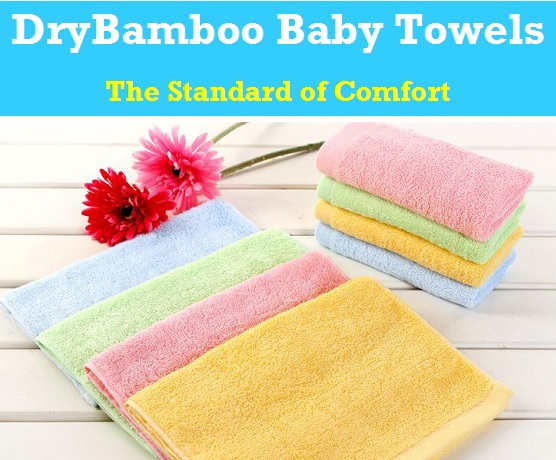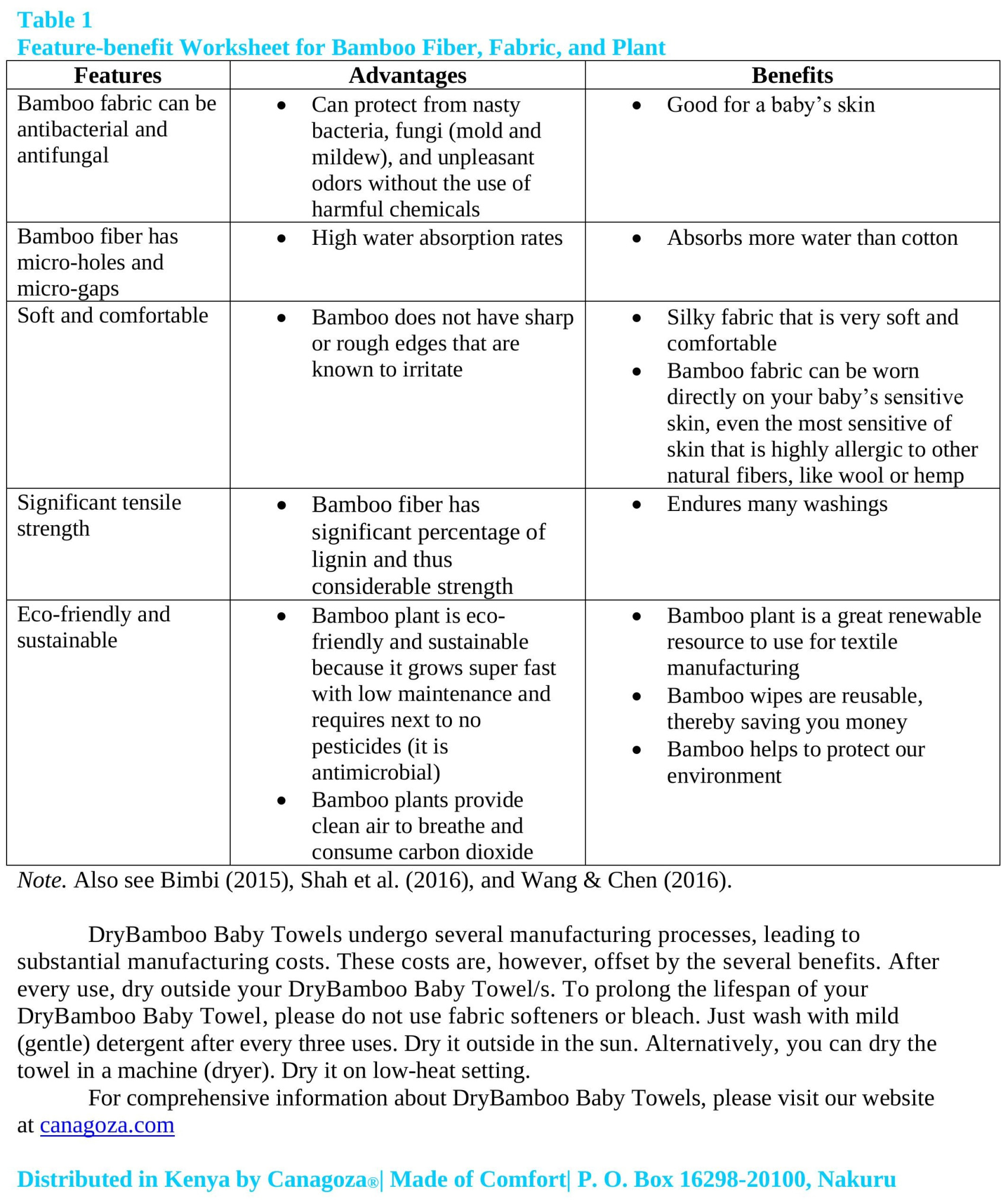


Bamboo Analysis
Bamboo fabric (cloth) can be hygienic because it can be antimicrobial (can be antibacterial and antifungal) and can resist odors. Unlike cotton, bamboo plant is antimicrobial since it has a bio-agent known as bamboo kun. Bamboo kun enables the bamboo plant to grow and mature without the use of pesticides.
The bamboo kun can remain in textile form (bamboo fibers/cloth). Bamboo kun can kill bacteria. That way, the wearer can feel fresher and kept odor-free for longer.
As for antifungal property, mold and mildew might not grow on bamboo cloth because of the potential presence of bamboo kun (Bimbi, 2015).
Bamboo baby towels are thus ideal for babies’ skin.
Bamboo fabric naturally wicks moisture/sweat off your skin. It absorbs more than cotton. Bamboo fabric absorbs more because bamboo fiber has many micro-holes and micro-gaps (Bimbi, 2015).
Bamboo is machine washable. It is color-fast (accepts organic dyes well) (Shah, Sultan, Jawaid, Cardona, & Talib, 2016).
If you have ever touched a bamboo baby blanket or clothing, you will know why so many parents love it so much. The lightweight, silky soft fabric is comfortable.
Bamboo is often described as feeling like cashmere. Here is why it is so touchable: the fiber of the bamboo is naturally round and smooth edged.
Bamboo fabric does not have sharp or rough edges that are known to irritate. For this reason, bamboo fabric can be worn directly on your baby’s sensitive skin, even the most sensitive of skin that is highly allergic to other natural fibers, like wool or hemp.
Bamboo fiber has a significant percentage of lignin and thus considerable strength (Shah et al., 2016).
Bamboo is often blended with cotton (in the ratio of 70% bamboo to 30% cotton) to give the fabric a little more structure (Bimbi, 2015; Wang & Chen, 2016).
Thermo-regulating qualities of bamboo cloth and clothing
Bamboo keeps you cool during summer/hot weather and warm during winter/cold weather.
Hypoallergenic
Bamboo does not irritate the skin, unlike some other natural and manmade fibers. Bamboo is gentler and a natural solution for people having sensitive skin.
Significantly soft and durable
Bamboo is a soft fabric and luxurious to the touch. It maintains its softness after not only repeated use, but also repeated washings. Bamboo softness comes with built-in strength.
Eco-friendly
Bamboo plant does not require chemicals and requires very little water to grow (unlike cotton plant). For that reason, bamboo is an environmental wonder-plant.
Biodegradable
Bamboo clothing is green. It will simply return to the earth by breaking down easily. Consumers thus have a real peace of mind.
After getting rid of a bamboo product you no longer need, you will rest easily. The product will leave minimal environmental impact (Wang & Chen, 2016).
Sustainable
Bamboo plant is among the quickest growing plants in the world. Once harvested, bamboo is capable of replenishing itself in one year. Some bamboo species grow up to 120cm daily (Pickering, 2008).
How Many Baby Towels Do You Need?
It depends somewhat on how frequently you bathe your baby. Is it three times per week or daily?
All in all, two might be enough. The reason is that you can have one to use and other in the wash/drying.
Caring for/Cleaning of DryBamboo Baby Towels
Your baby has, apparently, sensitive skin. You must thus be careful with the washing products you use in keeping your baby towels and other baby clothing clean, fresh, as well as safe.
Your baby’s towel must only be used for your baby. Avoid sharing the baby towel with other infant/s, child/children, or adult/s.
Be sure to separate your baby’s towel (and other baby clothing) from other infant’s, child’s, and/or adult’s clothing (Lees, 2018).
After each use, be sure to dry the towel outside. Also, after using the baby towel for three times, you must wash it (Lees, 2018).
In general, experts recommend washing all towels, including those made of bamboo and microfiber, after two or three uses (Norris, 2019).
Please do not use fabric softeners or bleach. Just wash with a mild (gentle) detergent.
Dry it outside in the sun. Alternatively, you can dry the towel in a machine/drier. Dry it on low-heat setting.
More specifically, choose a mild (gentle) detergent that does not contain any of the following additives:
(a) Fabric softeners,
(b) Perfumes,
(c) Whiteners,
(d) Dyes,
(e) Ultraviolet (UV) or optical brighteners,
(f) Stain guard ingredients,
(g) Oxygen-based bleaching agents,
(h) Enzymes, and
(i) Other fabric enhancers or anything scented (Bummies Quebec Canada, n.d.).
The above additives can cause skin sensitivities (such as irritation) and other issues (Bummies Quebec Canada, n.d.).
References
Please click on (or tap on) the following link to access/view the "References": References -- DryBamboo Baby Towels.doc